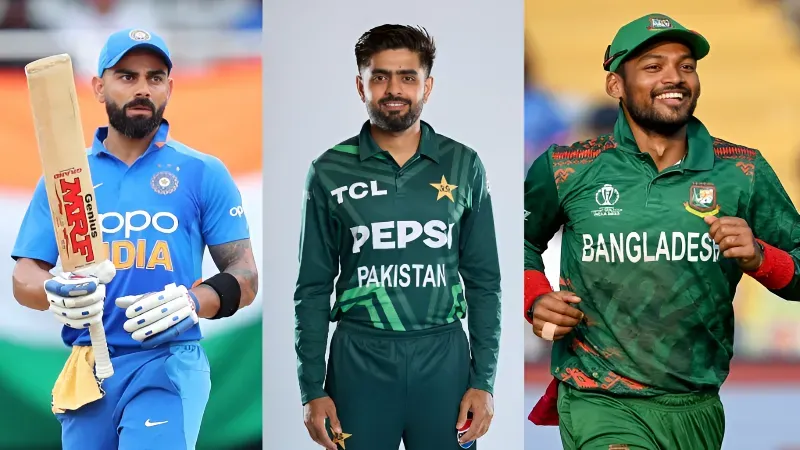If there’s one thing cricket enthusiasts enjoy arguing about (besides DRS madness and the Kohli vs Babar debate), it is captaincy. Nowadays, a captain is not just a title; they are the chief tactician, the figurehead, and often define a whole era.
Over the past five years, captaincy has felt more like a game of hot potato for many top teams. Throughout injury, retirements, a congested calendar, and changing tactics, captaincy has changed far more than many cricketers would like.
Why So Many Leadership Changes?
To start with, let’s consider the big question: why do so many teams change their captaincy so frequently?
The answer’s simple — today’s cricket calendar is relentless.With players hopping between formats and franchise leagues growing each year, rotation and rest have become routine — even for captains. Add in injuries, dips in form, and format-specific planning, and it’s no surprise that boards now prefer specialized captains over a one-size-fits-all leader.
Consider Bangladesh, India, and Sri Lanka — each of those teams has gone on to use 11 captains across formats in the previous five years. That is more than simply rotation – that is, a rebuilding, an identity crisis, and in some instances, crisis management! Bangladesh has gone from veteran faces like Mashrafe Mortaza and Tamim Iqbal to emerging leaders like Najmul Hossain Shanto and Mehidy Hasan Miraz.
For India’s player of the year. The transfer from Virat Kohli to Rohit Sharma, and knows also leaders by format, e.g., Suryakumar Yadav (T20Is) and Shubman Gill (Tests), is more so a strategy over confusion. But still, you get 11 captains to illustrate how deep the bench had to be, which has always been a significant issue with the scheduling parties and injuries to vital players, e.g., Rishabh Pant and Hardik Pandya.
A New Era of Format-Specific Leadership?
Welcome to cricket in 2025 — where captains are hardly ever captains across all formats!
Australia has had 10 captains from 2020, and it has even turned out to be reasonably successful for them. They lifted the 2021 T20 World Cup with Finch, and with Pat Cummins, dominated 2023 with the WTC and ODI World Cup winner. Their temporary captains, such as Steve Smith or Mitchell Marsh, fell into the clever rotation style rather than a chaotic position in the team.
England also opted to change – sometimes it had to, other times it intended to, but when Morgan retired and Root stepped down, England backed white-ball specialists such as Buttler and Harry Brook more. But after 10 captains since 2020, and various part-time captains of Moeen Ali and Phil Salt, they too have been inconsistent.
South Africa also enjoyed their fair share of experimentation, while it paid off in the end; they were fortunate enough to have their leaders rotate in, Faf du Plessis, Bavuma, and Aiden Markram. And then, almost 6 years after their last ICC trophy, the Proteas ended the drought and earned the title of 2025 WTC. So yes, perhaps a merry-go-round of leadership was merited.
Is Stability Overrated in Modern Cricket?
Here’s the deal: leadership changes were normally viewed as a sign of instability, but that is not the case anymore.
Teams are realizing it’s not necessary to appoint a single long-term King, and are picking captains who fit the specific format. Nothing wrong with having a captain who is there long-term (like Pat Cummins or Ben Stokes). However, as India has demonstrated with split captaincy, or South Africa’s growth under a rotating cast of leaders, it is a team’s depth of roster and leadership versatility that matters more now than merely having one charismatic leader.
That being said, too much evolution is a bad thing. Bangladesh and Sri Lanka’s disjointed results show that bad leadership can produce uncertainty, more so for young teams that require the right kind of leadership.
To catch up on the most current news on all of your favorite thrilling cricket updates, visit Six6slive to access our comprehensive Latest News, insightful analysis, and updates. Connect with the action now to make sure you never miss out!
